We’re having friends round tonight for some games and a Christmas food swop. There will be lots of sugar. There will (hopefully – this really depends on my spice mixture working) be mulled wine. There will (again hopefully – I’ve yet to make them) be mince pies. There will be shortbread that I made this morning (and which did not work very well because I used too much better – that will teach me to check a recipe before making it next time). And there will be this fudge.
I was sent on the quest that resulted in this fudge yesterday, when my Mum phoned to ask if I had a good fudge recipe and I realised that all I had was a recipe, created on a day a long time ago when I had condensed milk and cream to spare (as you do…), for something that was sweet and delicious, but sadly not fudge. My quest took me to the supermarket where I bought the ingredients for that not-fudge and then continued when I got home and tweaked the not-fudge recipe to come up with this…which thankfully does taste like fudge unless, like me, you boil the vanilla one for too long and end up with something closer to Thornton’s toffee. The cup measurements below are based on a 250 ml mug as equal to one cup. This would make a great Christmas gift if you’re still looking for ideas. And one big advantage is that because this (really a cheat) recipe uses condensed milk and icing sugar you don’t need to beat it as you do for proper fudge. The vanilla and chocolate fudge recipes below are basically the same, so I’ve copied a lot of the text from one to the other. That way, if you only fancy chocolate fudge, you don’t need to keep looking at the vanilla fudge recipe. These recipes make about 20 small, thick pieces of fudge each (though I should warn those coming tonight not to expect that much – there has been some…ahem…natural wastage…).
Vanilla Fudge
What you’ll need:
1 can condensed milk
1/2 cup double cream
1/2 cup icing sugar
2 tablespoons butter
Very small pinch of salt
1 1/2 teaspoons vanilla
What to do:
1. Line a small pan or container (mine was about 10-15 cm by 20-25 cm) with greaseproof parchment paper. I found a small mess tin to be the perfect size for the vanilla fudge. To make me feel better for my lazy, slap-dash way of lining the tin, please also do so in a lazy, slap-dash way. Thank you!
2. Put the condensed milk, cream, icing sugar and butter into a thick-bottomed pan (ideally non-stick though mine sadly is not) and bring to the boil over a low to medium heat, stirring constantly. Keep the pan over a low to medium heat until the mixture reaches soft ball stage. During this time stir the mixture constantly. Once or twice before the mixture reaches soft ball stage, stop stirring, turn the heat quite low and put the lid on the pan and leave it for a minute or two before removing the lid and continuing to stir the mixture. This will condense some of the water which is coming off the mixture at the top of the pan, which will then run back down the sides of the pan, washing any stray sugar (which might make the fudge grainy) back into the mixture. To tell whether the mixture has reached soft ball stage (which will take quite a while – at least 15 to 20 minutes), scoop a little bit out of the pan and drop it into a container of ice-cold water (or put the spoon into the cold water) and leave it for a few seconds before testing the fudge in the container of water. When it is at soft-ball stage, you should be able to roll the scoop of fudge into a soft, pliable ball.
3. When the fudge reaches soft ball stage, remove the pan from the heat and turn off the stove. Add the vanilla essence to the pan and it beat into the mixture thoroughly with a wooden spoon. Please imagine this step – it was just too difficult to photograph.
4. Tip the fudge into the lined pan and smooth it into the corners. Using a knife dipped into hot water, mark out squares on the top of the fudge and then set aside to cool completely (if you’re lazy like me and want things to happen quickly, you’ll set it aside in the fridge, although I don’t think you’re supposed to do that).
5. When the fudge has cooled completely, tip it onto a cutting board and remove the parchment paper. Using a sharp knife, cut the fudge into squares along the lines you marked earlier. Store in layers with greaseproof parchment paper between each layer.
Chocolate Fudge
What you’ll need:
1 can condensed milk
1/2 cup double cream
1/2 cup icing sugar
2 dessertspoons cocoa powder
2 tablespoons butter
Very small pinch of salt
1 tsp vanilla
What to do:
1. Line a small pan or container (mine was about 10-15 cm by 20-25 cm) with greaseproof parchment paper.
2. Put the condensed milk, cream, icing sugar, cocoa powder and butter into a thick-bottomed pan (ideally non-stick though mine sadly is not) and bring to the boil over a low to medium heat, stirring constantly. Keep the pan over a low to medium heat until the mixture reaches soft ball stage. During this time stir the mixture constantly. Once or twice before the mixture reaches soft ball stage, stop stirring, turn the heat quite low and put the lid on the pan and leave it for a minute or two before removing the lid and continuing to stir the mixture. This will condense some of the water which is coming off the mixture at the top of the pan, which will then run back down the sides of the pan, washing any stray sugar (which might make the fudge grainy) back into the mixture. To tell whether the mixture has reached soft ball stage (which will take quite a while – at least 15 to 20 minutes), scoop a little bit out of the pan and drop it into a container of ice-cold water (or put the spoon into the cold water) and leave it for a few seconds before testing the fudge in the container of water. When it is at soft-ball stage, you should be able to roll the scoop of fudge into a soft, pliable ball.
3. When the fudge reaches soft ball stage, remove the pan from the heat and turn off the stove. Add the vanilla essence to the pan and it beat into the mixture thoroughly with a wooden spoon.
4. Tip the fudge into the lined pan and smooth it into the corners. Using a knife dipped into hot water, mark out squares on the top of the fudge and then set aside to cool completely.
5. When the fudge has cooled completely, tip it onto a cutting board and remove the parchment paper. Using a sharp knife, cut the fudge into squares along the lines you marked earlier. Store in layers with greaseproof parchment paper between each layer.

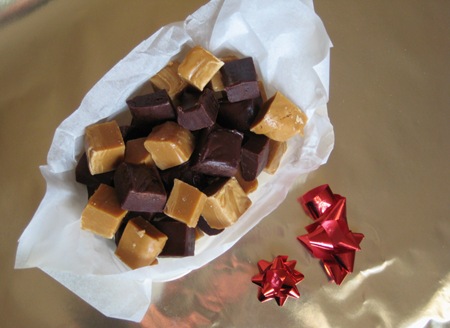
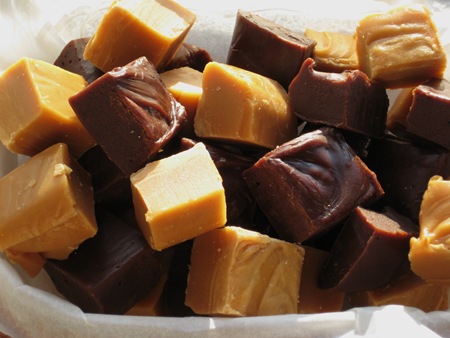
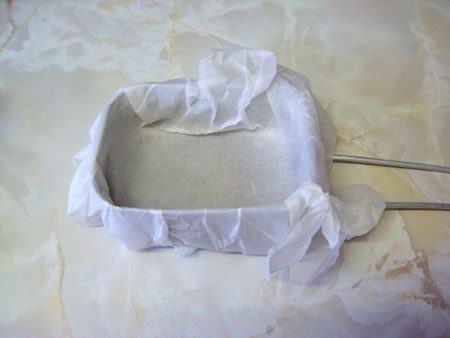
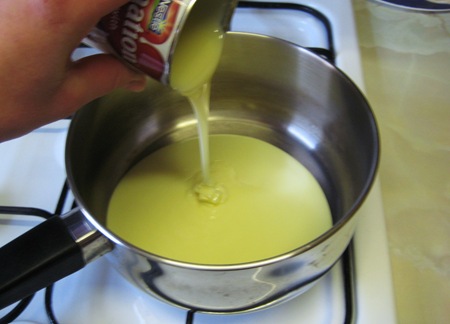
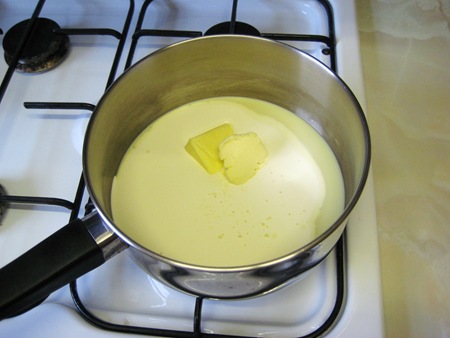
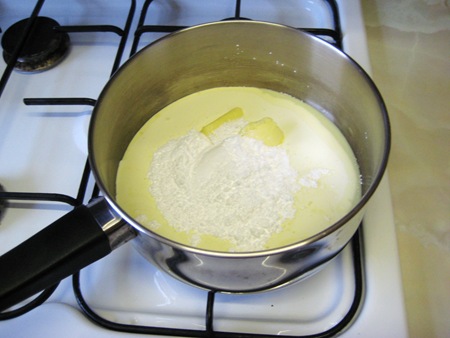
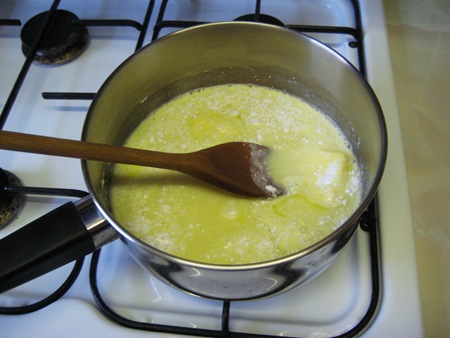
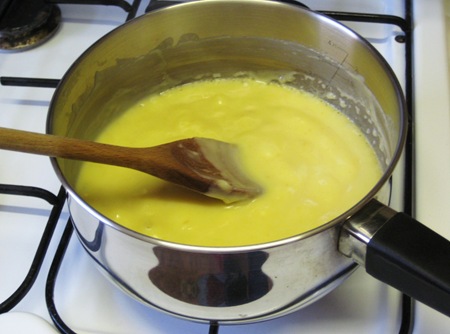
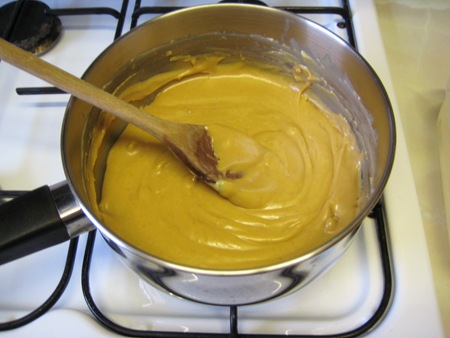

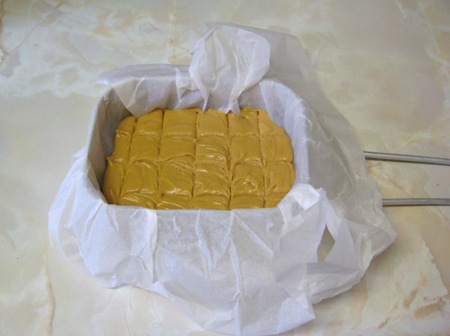
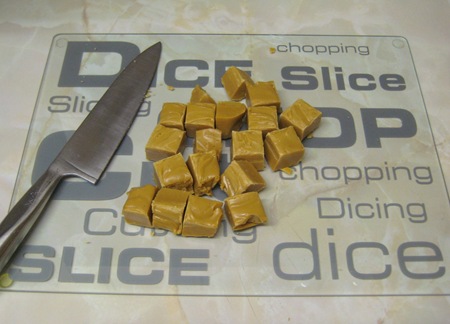
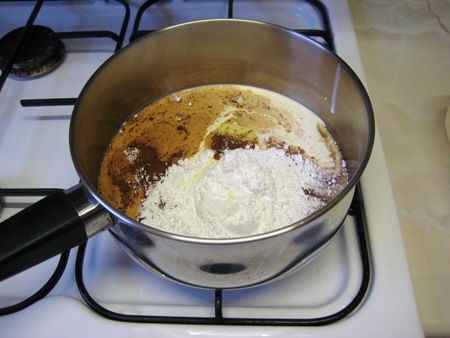
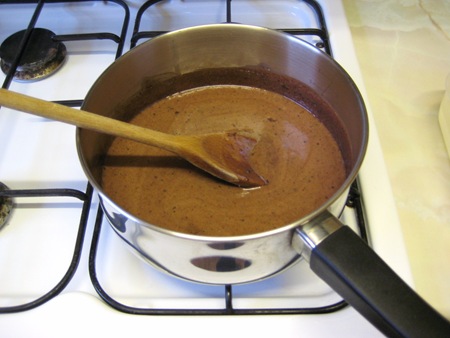
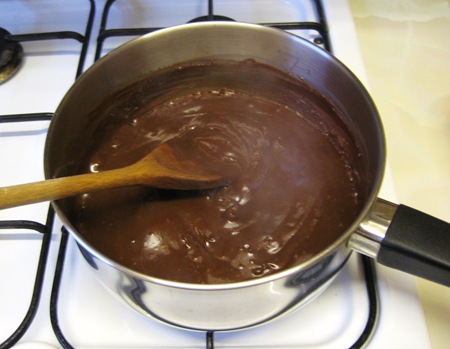
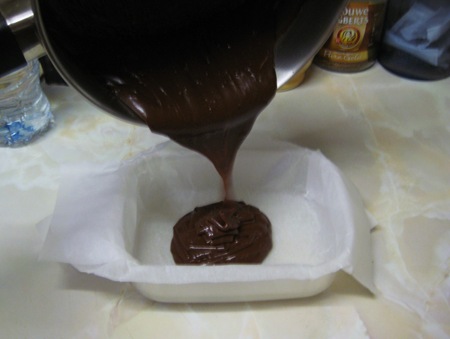
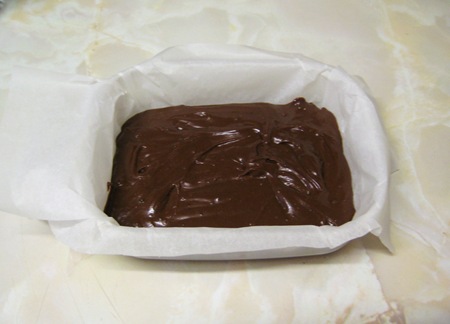
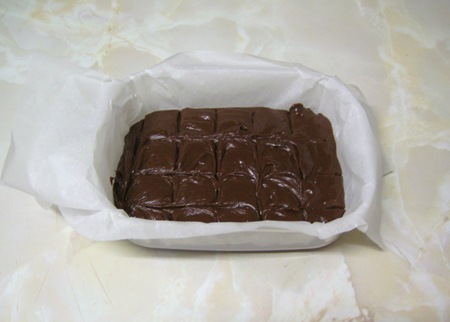
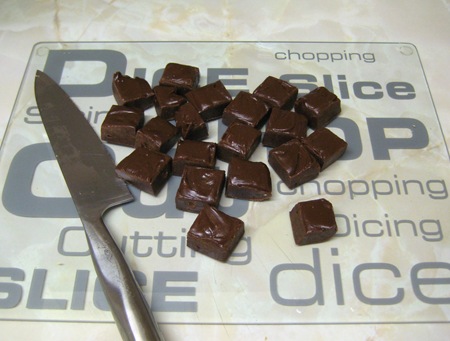
No comments:
Post a Comment